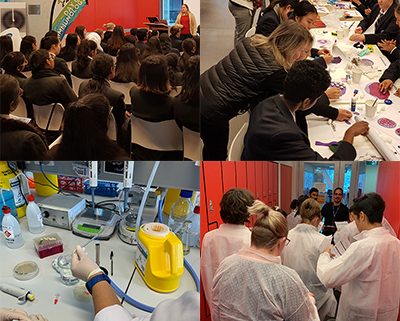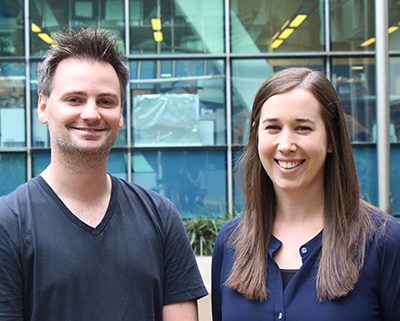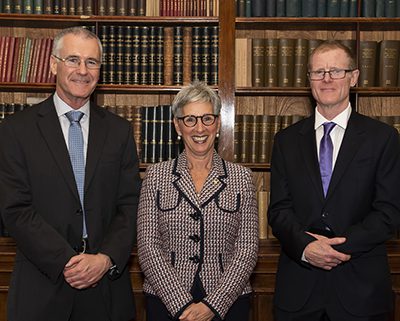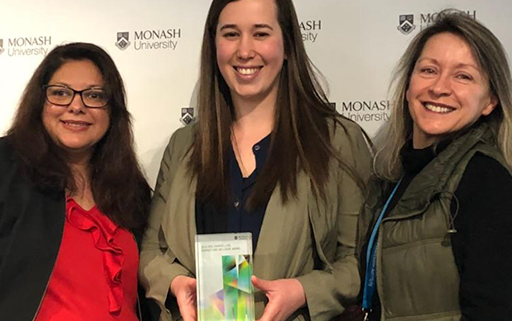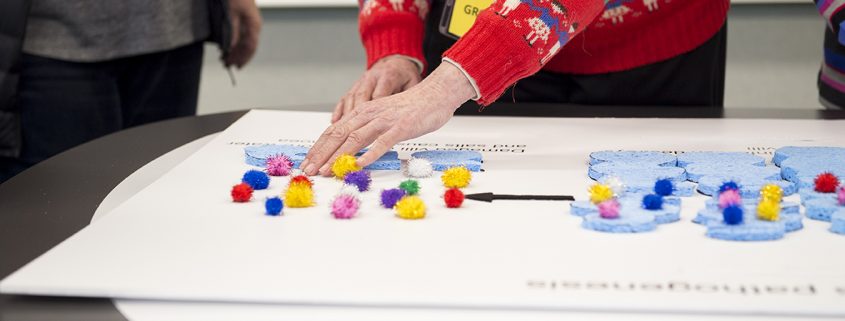Day of Immunology at the Monash BDI with lab tours and mini sensory science art exhibition
The International Day of Immunology offers an opportunity to celebrate the immune system and share our love of science with the general public. This year, the Monash Biomedicine Discovery Institute (BDI) invited more than 50 Year 11 students from Mac.Robertson Girls’ High School and John Monash Science School to celebrate the Day of Immunology with us on Wednesday 8 May.
The students were introduced to the Monash BDI by Associate Professor Stephanie Gras, who offered insight into the work her lab does and the importance of the immune system. Associate Professor Gras explained the importance and role of the immune cells that help us remain healthy and fight off infections on a daily basis, using references from The Avengers and Game of Thrones to explain the immune system.
“Cancer cells are like the White Walkers. They refuse to die and multiply to take over,” Associate Professor Gras said.
The group also visited Monash Micro Imaging, exploring the latest advances in microscopy. The students were shown how these technologies provide biomedical researchers with an unprecedented level of detail within cells and tissues.
The Sensory Science Interactive Art Exhibition was put on display in the foyer of the Monash BDI. Led by our artist-in-residence, Dr Erica Tandori, the activity was designed for students to learn about the immune system and to raise awareness of how members of the blind and low vision community have limited access to science. The students created their own posters of immune cells to be showcased at future sensory science exhibitions.
After morning tea, the students were broken into groups for tours of several Monash BDI labs. Students had the chance to put on lab coats and perform various lab experiments including: running DNA gels, counting cells under the microscope, growing microbes on plates and fishing crystals. They also heard from their lab tour guides about the work done in their labs and how they got into science.
The Day of Immunology event was wrapped up with a round of immunology trivia. The students were highly engaged in the game, with the winning four teams taking home giant toy microbes as prizes.
Thank you to the following labs for organising the lab tours and talks: Gras lab, Rossjohn lab, O’Keeffe lab, Jacobson lab, La Gruta lab and Turner lab. Also thank you to the volunteers that presented at the sensory scientific art exhibition.
The international Day of Immunology is celebrated annually on 29 April to raise public awareness of the immune system. In Australia, events are organised by the Australian and New Zealand Society for Immunology (ASI) including laboratory discovery tours hosted by research institutes. We’d like to acknowledge the support from the ASI and the Victoria/Tasmania ASI branch’s Day of Immunology organising committee.

